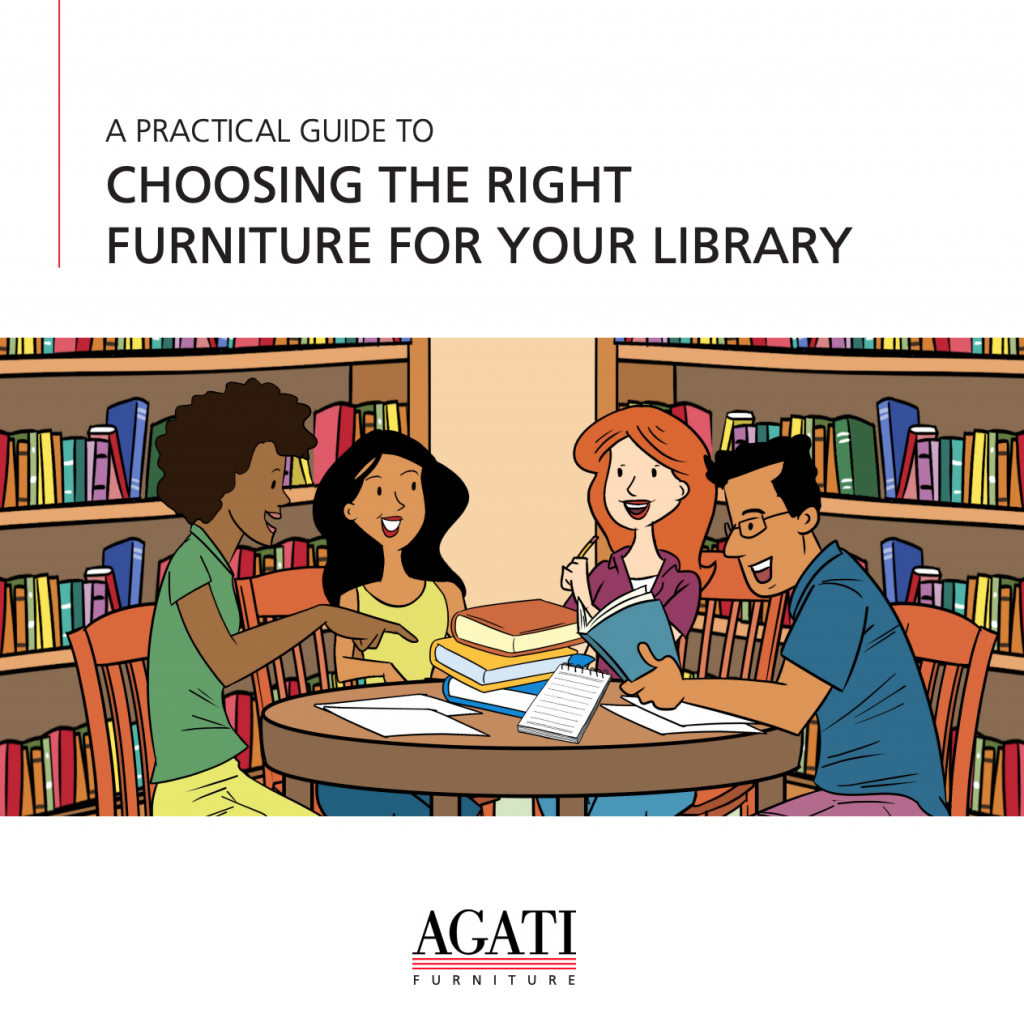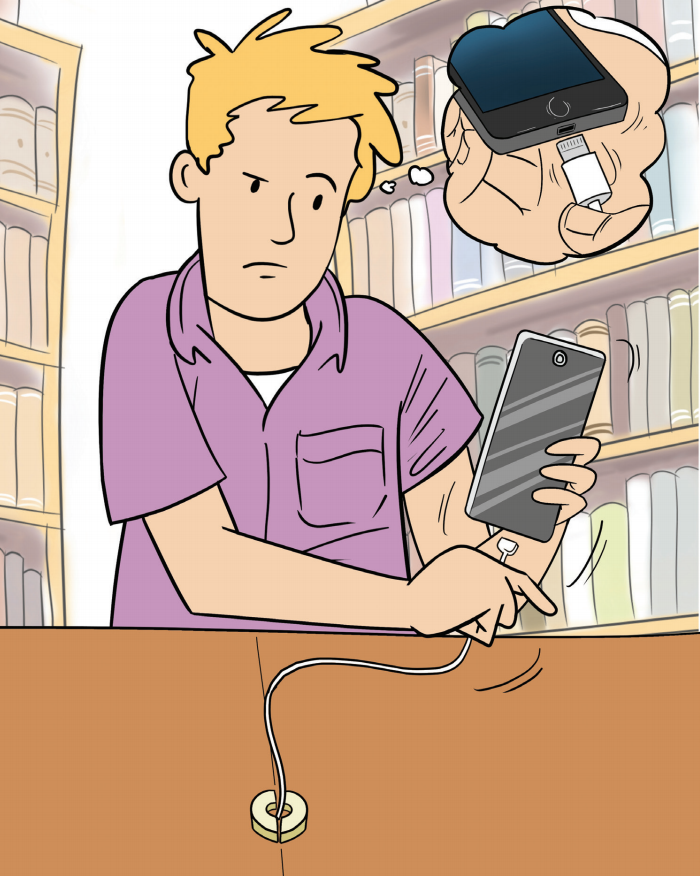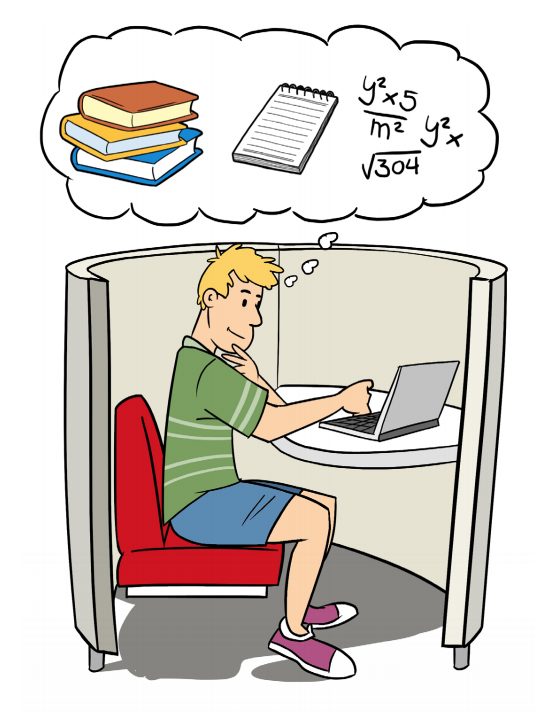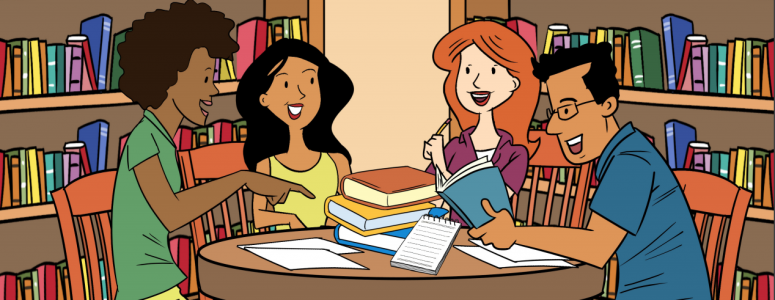
It’s not every day that a library finds itself sourcing new furniture. In general, these purchases happen every 5-10 years, maybe even 15 years in some cases.
While furniture itself is an art, it unfortunately doesn’t get the same armored protection as a delicate painting in a museum; instead, it endures coffee spills, scuff marks, and plenty of stray ink spots. The best libraries are filled with furniture that is designed, built, and chosen with patrons’ enjoyment in mind.
Knowing that your furniture acquisition is going to last you nearly a decade, it is worthwhile to become familiar with the elements responsible for creating a durable, comfortable, and productive piece.
But what does that mean specifically? What do you actually need to look for when you get down to choosing chairs, tables, lounge seating, and computer stations? This practical, nuts and bolts guide is designed to help.
Would you rather grab this official guide as a PDF resource? Click here to download the resource for free to print out, save for later, or share with your team!
Know How Your Patrons Use Your Library
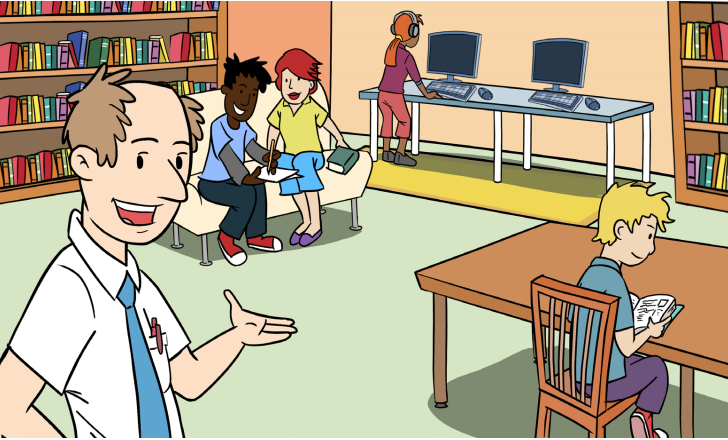
It is all too easy to purchase furniture that catches the eye or appears to serve a trendy purpose. It’s important to remember patrons work best when they feel protected and comfortable.
Lesson number one in library furniture acquisition is to know how your patrons use your library and what they value in a visit.
If you want to go golfing but try to substitute with a baseball bat, your game probably won’t be so good. As odd of a comparison as it may seem, there is a similarity with using library furniture.
When we sit down to design a new product, we always consider how the furniture will be used. To do this, we have created some common patron types, which are listed below. Keep in mind that your patrons themselves will likely assume more than one of these roles depending on the type of work they need to complete:
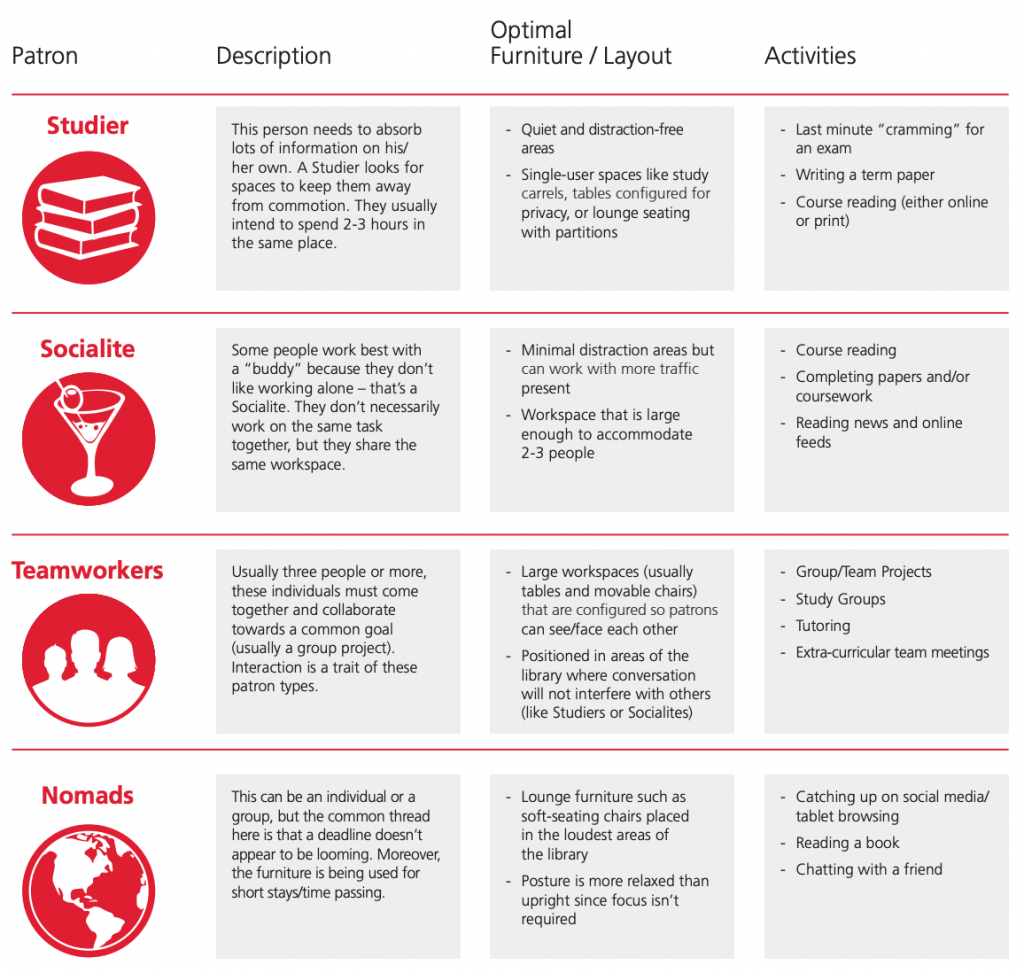
What Goes Where?
We have seen that Studiers, Socialites, Teamworkers, and Nomads all use library furniture for very different reasons.
Academic-focused spaces — especially law libraries — tend to need more private study space for the Studiers and Socialites. Libraries where group work is more common will benefit from a greater balance of larger tables and group study pieces, and the Teamworkers will thank you.
Public libraries, because they tend to have greater community focus, require more general areas and lounge seating.
Furniture as a Structural Element
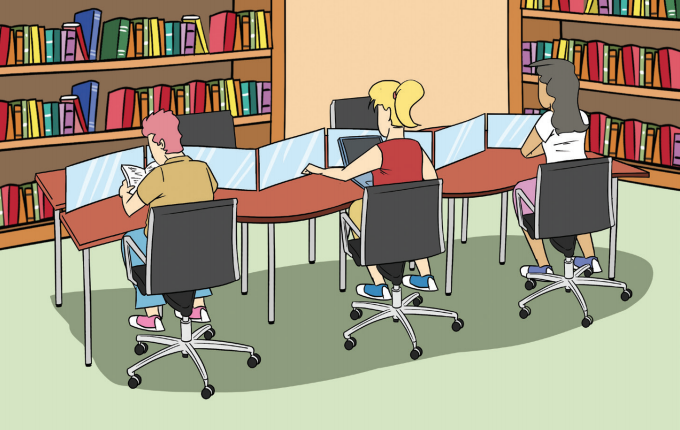
In addition to having the right balance of furniture types, it’s important to remember that color, textures, and layout also play a key role in space design. Poor design can be very subtle, affecting the senses almost subliminally. Proportion and the use of aesthetics — whether traditional or contemporary — will increase comfort and reduce the intimidation that patrons can feel.
Consider walking into a library that is a sea of study tables. While there may be plenty of space to accommodate many patrons, this approach to design lacks an element of “cozy” – the Studiers in your library will be none too pleased. Humans learn best when they are comfortable and secure, so using furniture with partitions or padded walls creates a sanctuary-like feeling and makes the space more productive.
Furniture Durability
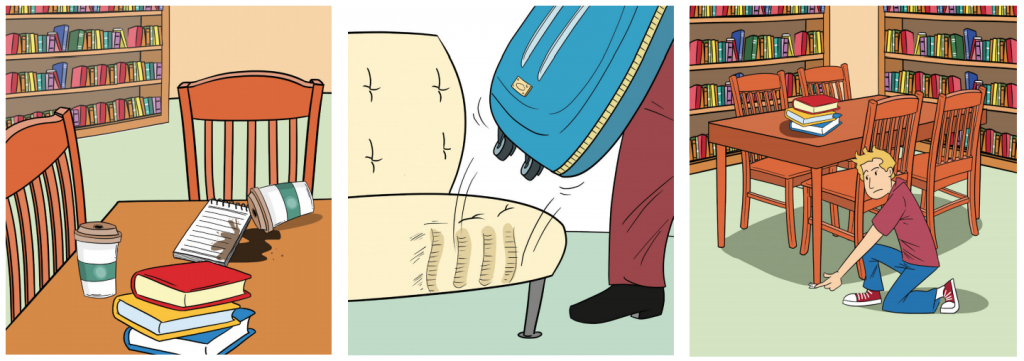
Library furniture must be sufficiently rugged to survive the significant wear and tear it’s bound to endure in a constantly-used public space.
Furniture that comes in a box and is held together with a few fasteners likely won’t last in a public environment. After a short while, its inability to stand up to everyday abuse makes your library appear shabby, requires more regular maintenance (chewing up your budget), and all too often leads to buyer’s remorse. Considering Total Cost of Ownership (TCO) is critical when sourcing new furniture.
There are two different ways to think about durability:
1) Functional
Will the furniture remain functional throughout its intended lifespan? In other words, if a chair leg breaks off after year one, it’s no longer functional. Functional durability really focuses on the workmanship of the furniture.
2) Aesthetic
This level of durability usually assumes functional durability, but this considers how the furniture endures in its environment. While a chair may keep all four legs for the next ten years providing a place for somebody to sit, the question here is “how does that chair look after its usage over time?”
Not surprisingly, the furniture with higher functional and aesthetic durability tends to cost more as it requires higher grade materials and design, but it also means fewer replacements over time.
Furniture Aesthetics

Functionality and durability aren’t enough on their own. Furniture also needs to look attractive, and mesh with the surroundings.
Since true public space furniture is built to last a decade or more, selecting a timeless design instead of a trendy one is safer.
Creating a welcoming environment should be your main guide in selecting furniture designs. This is especially true for Studiers who hunt for that perfect spot to focus.
Pay attention to the most prominent visual elements of your furniture, such as table legs and chair backs. For example, table legs that are more substantial will convey an impression of quality.
Note: Don’t sacrifice durability and functionality for aesthetics; the best designs balance all three elements. We discuss aesthetics in this guide after durability and functionality for a reason: there is no sense in having good aesthetics if the furniture isn’t durable or functional. A nicely designed piece of furniture that doesn’t last is not doing its job.
Furniture Technology
Technology changes faster than library furniture wears out.
Change is certain, and the best furniture is able to absorb adaptations to technology if it is to fulfill a 10+ year lifespan.
It is tempting to be “wowed” by furniture that has compatibility with a specific technology (i.e. charging plug), but the unexpected ways in which technology will evolve can make such specialization risky.
Consider cell phone holders built into study carrels that are now too small to use because screens on devices are getting progressively larger. Rather than increasing flexibility, they end up decreasing it. Or consider computer and smart phone charging cable configurations that seem to change almost yearly. It doesn’t make much sense to have hard-wired charging systems when the adapters are prone to becoming obsolete
On the other hand, enhancements such as built in power outlets and USB ports facilitate the use of computers, smartphones, and tablets. A good rule of thumb here is to have one or two power outlets per person or one outlet and two USB outlets. (Well-designed furniture considers the user types and includes an adequate amount of outlets.)
In choosing these, note the USB amperage — low amp units (as found in the USB 1.0 and 2.0 specifications) aren’t even worth it because the low power they provide does not charge any faster than the device consumes it.
Power intended for public use should be very discoverable (i.e. near desktops or logical plug-in locations). If patrons have to crawl on the floor to get electricity, you typically risk them messing up much more than their hands and knees.
Desks and Tables
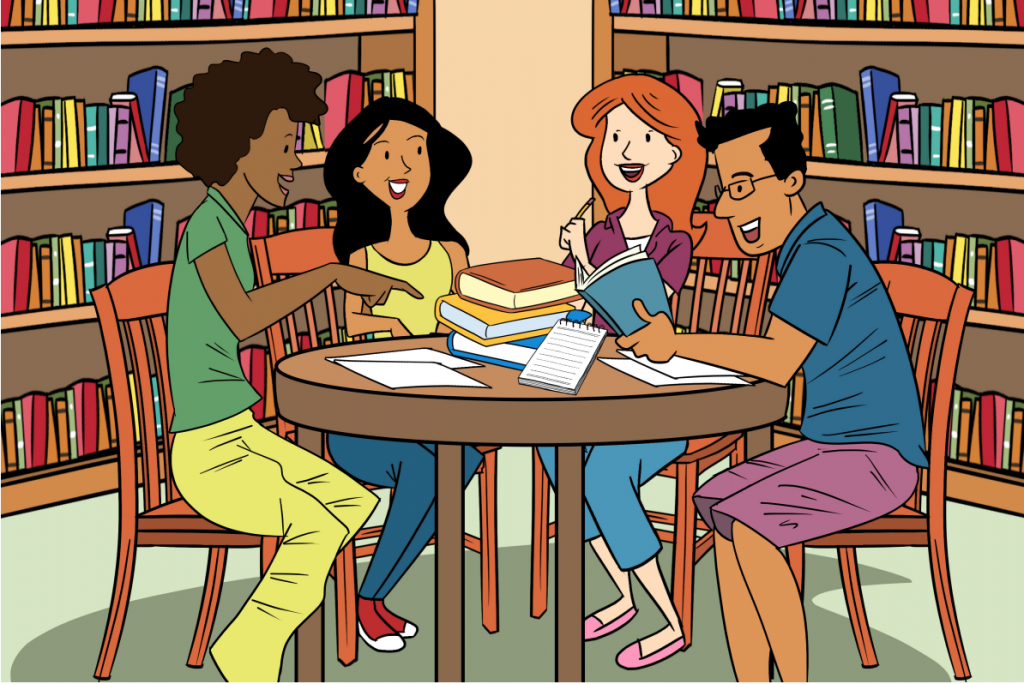
Tables are adaptable: they can stand alone and often be used by Studiers, they can accommodate a duo of Socialites, or they can be pushed together, creating space for a large group of Teamworkers.
Circular tables are more appropriate for group study because they naturally create a conversational setting. Rectangular tables are better for individual work as they allow one to comfortably claim an area.
If there are no partitions, a table should offer at least six square feet for each reader, preferably a surface three feet wide by two feet deep. Graduate and doctoral students may need more space to sprawl — as much as three and a half or even four feet.
The space can be smaller in a reserve book room, but no less than 33 inches by 21 inches.
If there is a narrow shelf over the back of the working surface, a depth of 27 inches is recommended so the shelf doesn’t interfere with overhead lighting. Any shelving must be also high enough so a laptop screen can be folded open.
It is easy to believe that with the adoption of technology comes a need for modified human work spaces. This theory gets disproven time and again. Humans take a long time to evolve (study habits are no exception). Even though technology now plays a role, it doesn’t have the capacity to fundamentally change work patterns, which explains why desks, chairs, and tables continue to be the optimal library installation. What technology has done, however, is create a need for power access and an increased work space. What once only required a book, notebook, and pen now requires those items plus a laptop or tablet. To comfortably accommodate these items, more surface space is required.
Upright Seating
Think about how, where, and why people are sitting in your library.
Upright chairs (matched with a table or desk) are usually the best solution for Studiers and Socialites who need to hunker down, read, research, and study for long periods.
You need to sit in these chairs before buying them. Some things to observe:
- Do they force your back to sit at an almost 90-degree angle to your lower body? (This position encourages focus.)
- Can you place your feet slightly underneath the seat (knees slightly bent backwards)?
- If on casters, does the base contact walls before the back of the chair (to reduce wall damage)?
These chairs need to be the most durable in the library. A chair may also need to withstand someone standing on the seat, or people repeatedly leaning back on two legs, or even one.
Consider the fit of your seating for people of various sizes and shapes. It will need to be comfortable for all of them. The seat pan must be large enough for the patron, and the vertical front of the seat pan should not apply pressure onto the back of the legs.
Stretchers (horizontal connectors) that connect one leg to another provide additional structural strength.
The backrest must provide sufficient lumbar support. The lower back should be well-supported — which pushes the rest of the back upright. To check, position yourself in the corner where the seat meets the backrest; good contact will prevent the back from curling.
If the chair has armrests, will they fit under the table? Users should not have to lean forward just to maintain contact with the equipment.
Lounge Chairs

For casual conversation typically had by Socialites or Nomads, or stays of less than 30 minutes, a lounge seat is most appropriate.
When judging a lounge chair, examine the pitch of the chair (the relationship of the slant of the chair back to the seat), and take note of the seat depth. Will most users be able to easily rest their feet on the floor as they sit?
Pay attention to foam cushioning and its density. Denser foam is more durable and supportive. A lounge chair that is too soft will envelop the body, impairing circulation. Softer cushioning also makes rising out of the seat more difficult. This can be challenging for elderly or mobility-impaired patrons.
Even the most robust foam eventually breaks down, but something needs to push it upward to keep foam pressing against the upholstery. Under structure (webbing) can push against the foam which prevents indentations and extends useful life.
This approach to design is superior, but it is generally more expensive. Very frequently, manufacturers save on their costs by just putting a piece of foam over plywood without any elastic webbing. As a result, the foam wears quicker, and the furniture’s life is greatly reduced.
Don’t use lounge seating for upright active work patterns where you’d expect to find Studiers typing up a paper. Don’t put a lounge chair up to a 30-inch high table — people will have to lean forward, an unnatural position that reduces concentration and the ability to work.
Stools
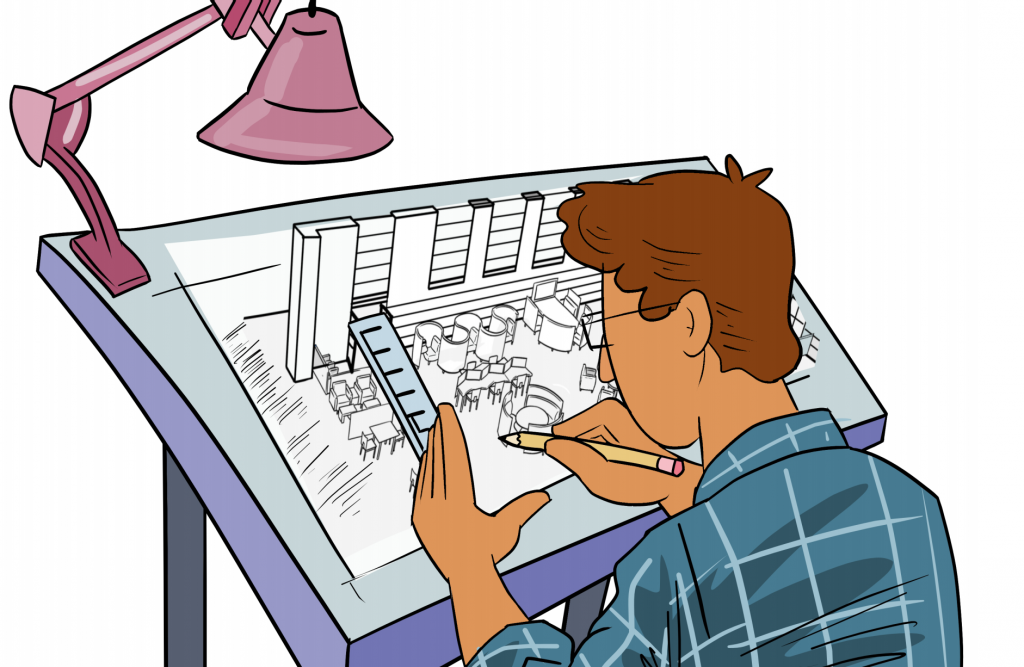
Stools may be viewed as the lowest rank of seating options, but they are important in a library.
Library users often enjoy sitting on short stools while browsing among stacks, particularly when resources are on the lower shelves. Lightweight stools can be easily moved — particularly by children — and shifted to where the user needs to sit.
Tall stools are ideal as a quick place to perch while locating library resources. Because people will use them briefly and then move on, back support is rarely required. High stools are also a logical choice for a media room for video interviews.
Study Carrels and Nooks

Carrels are the quintessential choice for patrons who need privacy and seclusion for research. The Studiers expect this style of furniture to be in any library worth their time.
But study carrels have changed since their introduction over a century ago.
These days, carrel design should consider that a laptop (or tablet) will almost always be present along with study materials — that means a unit must be around 42 inches wide by 30 inches deep.
Built-in wire management systems can avoid messy electrical and cable wires that might be accidentally kicked loose.
The panel facing the user should at least be at eye level, while a shelf can provide a place to temporarily store research material. If full side panels are used, you’ll want a study light to adequately illuminate the reading surface.
A study nook rotates the carrel 90 degrees, creating a side entry so the back of the patron no longer faces out into the library. This offers more privacy (especially from laptop/tablet screens), and a sanctuary-like environment makes solo study more effective.
Nooks also tend to offer more portability than a traditional study carrel, enabling librarians and management to more easily reconfigure study areas in response to future change. The walls/partitions offered by carrel designs can also break up a large, open space to create a sense of coziness within the library
Check Out
Libraries will continue to evolve as they’ve always done. What remains a constant, though, is that humans learn best when they are protected and comfortable. New furniture decisions should involve much more than liking a look or style; they should consider at least all of our experience shared in this book, and perhaps more.
It’s been a privilege to help the academic community outfit their learning centers for over 35 years, and we look forward to 35 more as we develop designs that meet the changing needs of the modern library.
Download the Guide for Your Team
Want to save the official guide to share with your team, save for later, or keep around for reference? Fill out the form below to download this resource for free:
